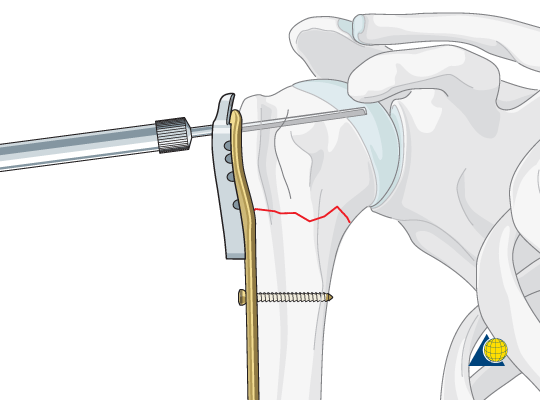Leibniz University of Hanover researchers have used a metal 3D printer to create a bone cutting drill with an internal cooling system.
The Institute of Production Engineering and Machine Tools (IFW) at Leibniz university employed German manufacturing company Toolcraft to create the device. By adding an internal cooling system tissue damage due to high temperatures should be reduced.

Intermittent bone drilling
Typically Drilling bone is performed intermittently as temperatures can reach 48°C during surgeries. By iteratively drilling, surgeons attempt to keep temperatures of the drill low, however the procedure can still cause tissue damage. External cooling is not possible as it would interfere with the wound and so to mitigate this, the team at Leibnez University’s IFW set out to redesign the bone drill with an internal cooling system.
IFW reached out to Toolcraft who used a Concept Laser machine to produce a bone drill with the same dimensions as a conventional device. With a difference, the laser melting machine was able to create intricate internal channels.
The bone drill now features 1.2 mm cooling ducts to supply coolant (blue) and remove thermal energy (red). The innovative digital design was created by German engineering firm Schmidt Wft using CAD software and simulation programs. Having created the prototype device, Toolcraft sent it to IFW to perform tests and using water as a coolant IFW found the drill reduced temperatures by up to 70%.

3D printed precision
Metal 3D printing is increasing applied within the medical industry for its ability to create complex, bespoke or medical devices with improved functionality.
Concept Laser was also involved in a recent project to redesign the ancient suturing process. British company Sutrue designed an innovative new method of stitching patients with its precise metal 3D printed device. And while 3D printed metal is also allowing for new possibilities in implant production, this may be a thing of the past with recent advancements into 3D printed synthetic bones.
To stay updated with all the latest medical 3D printing news, subscribe to the most widely read newsletter in the 3D printing industry, follow us on twitter and like us on Facebook.
Featured image shows the 3D printed internal cooled bone drill. Image via Toolcraft.



